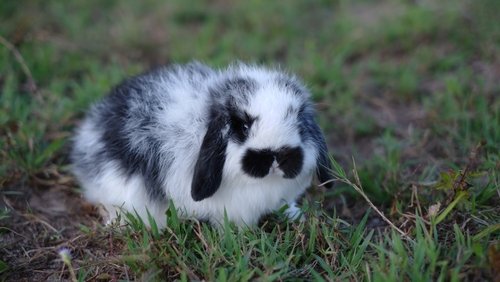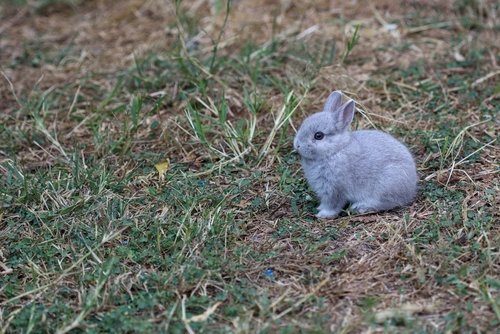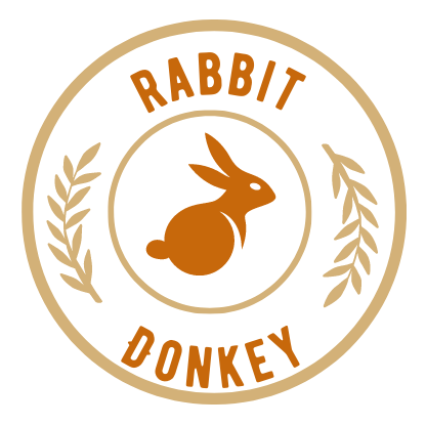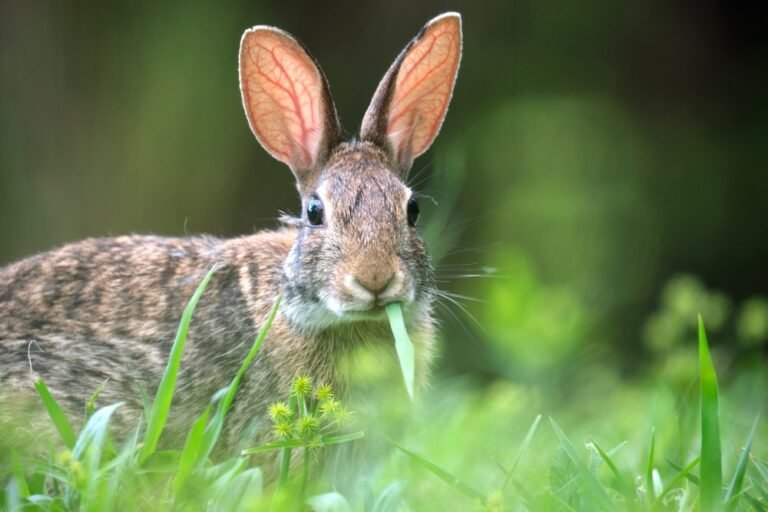Domestication – What You Need to Know About Caring for Rabbits
Rabbits, with their soft fur, adorable twitching noses, and delicate hop, have long captivated the hearts of both young and old. These enchanting creatures hold a special allure, making them one of the most popular pets worldwide. Rabbits come in various breeds, each possessing its unique characteristics and charm. Let’s talk about caring for rabbits.
From the tiny Netherland Dwarf to the floppy-eared Holland Lop, there is a rabbit breed to suit every person’s preference. Beyond their undeniable cuteness lies a remarkable connection that forms between humans and rabbits through proper care and attention.
While some may perceive rabbits as simply cuddly companions or decorative additions to a household, they are sentient beings deserving of our utmost respect and care. Responsible rabbit ownership entails going beyond superficial aesthetics and delving into understanding their intricate needs.
Proper Care: A Rabbit’s Well-being Depends on It
Caring for rabbits is an obligation and an opportunity to form a deep bond with these endearing creatures while ensuring their well-being. By providing appropriate housing, nutrition, grooming, healthcare, and attention, we significantly enhance their quality of life.
Sadly, many people underestimate the care required by rabbits or fail to grasp the true extent of their responsibilities. Without proper care and attention from their human guardians, rabbits can suffer physically and emotionally.
Neglecting vital aspects such as suitable habitats or nutritious diets can lead to severe health issues or even drastically shorten a rabbit’s life expectancy. Consequently, as caregivers, we must educate ourselves about these enchanting creatures’ needs to provide them with fulfilling lives.
Through this comprehensive guide on caring for rabbits, we aim to delve into every aspect necessary for promoting optimal well-being in these delightful companions. By understanding their behavior, providing appropriate housing, ensuring a balanced diet, maintaining good hygiene practices, and being vigilant about their healthcare needs, we can embark on a journey of compassion and mutual enrichment with our furry friends.
Remember, the moment we welcome a rabbit into our lives, we embrace the responsibility of safeguarding their welfare. Let us embark on this enlightening voyage together and uncover the secrets to nurturing a harmonious bond with our beloved rabbits.
Understanding Rabbit Behavior and Needs
Overview of Rabbit Species Commonly Kept as Pets
When it comes to choosing a rabbit as a pet, there are various adorable and popular breeds to consider. Two such breeds include the Holland Lop and the Netherland Dwarf. The Holland Lop is known for its lop ears that hang down on either side of its head, while the Netherland Dwarf is cherished for its compact size and cute facial features.
These breeds have become favorites among rabbit enthusiasts due to their friendly personalities and suitability for domestic settings. Additionally, both the Holland Lop and Netherland Dwarf have an average life expectancy of 7-10 years, making them long-term companions for rabbit lovers.

Exploring the Social Nature of Rabbits and Their Need for Companionship
Rabbits are highly social animals that thrive on companionship. In the wild, they naturally live in warrens with other rabbits, forming strong bonds within their groups. As pets, it is crucial to understand that rabbits require social interaction to lead happy and fulfilling lives.
Keeping rabbits in pairs or small groups whenever possible is recommended, as this allows them to engage in natural behaviors like grooming each other, playing together, and even cuddling up during rest periods. A bonded pair of rabbits can provide comfort and reassurance to one another when facing unfamiliar situations or potential stressors.
Discussing the Importance of Providing a Safe and Stimulating Environment for Rabbits to Thrive
Creating an environment that caters to a rabbit’s needs is vital for their overall well-being. A safe rabbit habitat should be spacious enough to allow movement but also secure enough to prevent escapes or potential hazards outside their enclosure.
Providing hiding spots such as tunnels or boxes will give them a sense of security while mimicking their natural instincts. Creating a stimulating environment involves offering toys suitable for rabbits, like chew toys or puzzle feeders, to promote mental enrichment and prevent boredom.
Regularly rotating their toys and rearranging furniture within their rabbit house can also keep them mentally engaged. Moreover, it is important to ensure that any plants or household items within their reach are non-toxic, as rabbits have a tendency to explore by nibbling on objects.
By understanding the different rabbit breeds commonly kept as pets, recognizing their social needs, and providing a safe and stimulating environment, rabbit owners can enhance the well-being of their furry companions. These considerations contribute to a fulfilling life for rabbits, ensuring they can exhibit natural behaviors and enjoy an extended lifespan in the caring hands of knowledgeable owners.
The Ideal Housing for Rabbits: Creating a Comfortable Habitat
Exploring Suitable Housing Options
Rabbits require appropriate housing that caters to their specific needs. There are various options available, including hutches, cages, and indoor enclosures.
Hutches are commonly utilized for outdoor rabbits and should be well-insulated to protect them from extreme temperatures. They should offer enough space for the rabbit to stretch, hop around, and exhibit natural behaviors.
Cages can be used both indoors and outdoors but must provide ample room for the rabbit’s comfort. Indoor enclosures are becoming increasingly popular as they allow rabbits to roam freely in a safe environment while being supervised.
Adequate Size, Ventilation, and Temperature Control
When considering the size of a rabbit’s habitat, it is essential to provide sufficient space for them to move around comfortably. As a general guideline, the enclosure should be at least four times the size of the rabbit when stretched out fully.
This allows them to engage in physical activity and prevents muscle atrophy or obesity. Proper ventilation is crucial in maintaining a healthy living environment for your furry friend.
Good air circulation prevents the buildup of ammonia from urine or other unpleasant odors that could negatively impact your rabbit’s health. Temperature control plays an imperative role in ensuring your rabbit’s well-being.
It is important to keep their habitat away from direct sunlight or drafts as rabbits are susceptible to heatstroke or hypothermia. Maintaining an ambient temperature between 60-70°F (15-21°C) is considered ideal.
Promoting Mental Stimulation with Hiding Spots, Toys, and Tunnels
Providing hiding spots becomes vital to ensure your rabbit thrives emotionally and mentally in its habitat. These can include cardboard boxes turned on their sides or specially designed hideaways where your bunny can retreat when seeking solitude or a sense of security.
Hiding spots mimic natural burrows, which rabbits would typically create in the wild. Introducing toys and tunnels in your rabbit’s habitat further stimulates their senses and promotes physical activity.
Toys can include chewable items, such as wooden blocks or safe plastic toys, providing both entertainment and essential dental stimulation. Tunnels offer an opportunity for exploration and play, allowing rabbits to exercise their natural instincts.
By carefully considering housing options, ensuring adequate size, ventilation, temperature control, and providing hiding spots along with engaging toys and tunnels, you can create a comfortable habitat that promotes your rabbit’s overall well-being while mimicking their natural instincts. The next section will delve into the nutritional needs of rabbits to further enhance their care and longevity.

Nutritional Needs and Feeding Guidelines
Overview of a rabbit’s digestive system and dietary requirements
To provide the best care for your beloved bunny, it is essential to understand their unique digestive system and nutritional needs. Rabbits are herbivores with a complex gastrointestinal tract designed to process high-fiber diets. Their digestive system relies on a delicate balance of fiber, nutrients, and beneficial bacteria in their gut.
In the wild, rabbits graze on grasses and forage for various plants. Mimicking this natural diet is crucial to ensure their overall health and well-being in captivity.
Discussion on the importance of hay in a rabbit’s diet for dental health and digestion
Hay is paramount in a rabbit’s diet as it provides the essential fiber for healthy digestion and dental health. The constant chewing motion required while consuming hay helps wear down their continuously growing teeth, preventing dental issues such as overgrowth or malocclusion.
Good quality grass hay, such as timothy orchard grass, should always be available in your rabbit’s habitat. It not only aids in maintaining proper gut motility but also prevents gastrointestinal blockages that can be life-threatening to rabbits.
Providing information on appropriate fresh vegetables, fruits, pellets, and water sources for rabbits
In addition to hay, rabbits require other dietary components to meet their nutritional needs adequately. Fresh vegetables are an important source of vitamins and minerals in their diet.
Leafy greens such as kale, spinach, or romaine lettuce should be offered daily but introduced gradually to avoid digestive upsets. Alongside vegetables, small amounts of fresh fruits can be given occasionally as treats due to their higher sugar content.
Commercially available rabbit pellets can also supplement their diet; however, they should not constitute most of their food intake. Look for high-quality pellets specifically formulated for rabbits, avoiding those with added seeds, nuts, or colorful additives.
Ensuring a constant supply of fresh, clean water is crucial for your rabbit’s hydration needs. Use a water bottle or heavy ceramic bowl to prevent tipping and contamination.
You can ensure their health and longevity by understanding the intricate needs of a rabbit’s digestive system and providing them with a balanced diet consisting of hay, fresh vegetables, fruits in moderation, pellets as supplements, and unlimited access to clean water. Following these feeding guidelines will contribute positively to their overall well-being and help prevent diet-related issues that may arise throughout their life span.
Grooming and Hygiene Practices
Preventing Fur Matting and Hairball Formation
Regular grooming is essential for ensuring the health and well-being of your beloved rabbit. Not only does it help maintain their beautiful coat, but it also prevents fur matting and hairball formation. Rabbits are meticulous groomers, spending a significant amount of time each day grooming their fur with tongues.
However, they may require assistance in properly managing their thick coats, especially during shedding seasons. To prevent fur matting, dedicate regular sessions for brushing your rabbit’s fur using a soft brush or a specially designed rabbit grooming tool.
Daily brushing is recommended for long-haired breeds such as the Lionhead or Angora rabbits to avoid tangles and mats. Short-haired rabbits like the Dutch or Mini Rex typically require less frequent brushing but should still be groomed at least once a week.
Brushing Techniques for Different Breeds
Different rabbit breeds have varying coat types and grooming needs. Understanding the specific requirements of your rabbit’s breed will help you provide appropriate care.
For long-haired rabbits, start by gently combing through the fur using a wide-toothed comb or slicker brush to remove any tangles or debris. Then use a bristle brush to smooth out the coat and enhance its natural shine.
Short-haired rabbits can also benefit from regular brushing, as it helps minimize shedding and removes loose hairs before ingesting during self-grooming sessions. A rubber grooming mitt can be particularly effective in collecting loose hairs from short-coated breeds.
Importance of Nail Trimming, Ear Cleaning, Teeth Checks, etc.
Apart from maintaining their fur, other aspects of grooming are equally crucial for your rabbit’s overall hygiene and health. Regular nail trimming is necessary since overgrown nails can cause discomfort while walking or lead to injuries.
It is essential to use specially designed nail clippers or seek help from a veterinarian experienced in rabbit care to ensure safe and accurate trimming. Ear cleaning is also important in rabbit grooming, as wax buildup or parasites can lead to ear infections.
Use a small amount of ear cleaner specifically formulated for rabbits on a cotton ball or soft cloth to gently wipe the outer ear area, being careful not to insert anything into the ear canal. In addition, checking your rabbit’s teeth is crucial, as dental problems are prevalent in rabbits due to their continuously growing teeth.
Regular inspection helps identify any signs of overgrowth, malocclusion (misalignment), or spurs that may require veterinary attention. By dedicating time and attention to grooming your rabbit properly, you contribute significantly to their overall well-being and help ensure they enjoy a healthy and happy life in their rabbit house for many years.
Health Care Considerations
Outlining Common Health Issues in Rabbits
Like any other animal, rabbits can be prone to certain health issues. It is essential for rabbit owners to be aware of these potential problems so they can provide appropriate care.
Dental problems are common among rabbits due to their continuously growing teeth. Malocclusion, or misalignment of the teeth, can lead to painful dental issues and difficulty eating.
Another critical health issue is gastrointestinal stasis, where the rabbit’s digestive system slows down or stops working altogether. This condition can cause severe discomfort and even lead to life-threatening complications if not addressed promptly.
Discussing Preventive Measures
Prevention plays a vital role in maintaining rabbits’ overall health and well-being. Vaccinations are crucial in protecting rabbits from certain diseases like myxomatosis and rabbit hemorrhagic disease (RHD). Myxomatosis is a viral disease that affects wild and domestic rabbits, causing swelling around the eyes, nose, ears, and genitals.
RHD is a highly contagious viral infection that affects internal organs and often leads to sudden death. Vaccinations are recommended as part of routine rabbit healthcare to minimize the risk of these diseases.
Providing Guidance on Finding a Reputable Veterinarian
Access to a reliable veterinarian specializing in rabbit care is indispensable for any rabbit owner. Not all veterinarians have extensive knowledge or experience with rabbits’ unique anatomy and physiology; therefore, it is crucial to find a reputable professional who does.
Seek recommendations from fellow rabbit enthusiasts or local rescue organizations specializing in small animals. A good veterinarian will perform regular check-ups, provide vaccinations when needed, and offer advice on nutrition and preventive care measures tailored to rabbits’ needs.
Conclusion
Caring for rabbits goes beyond providing them with a suitable habitat and meeting their dietary needs. It also involves being attentive to their healthcare requirements.
By being aware of common health issues such as dental problems and gastrointestinal stasis, rabbit owners can take proactive measures to prevent or address these concerns promptly. Vaccinations against diseases like myxomatosis and RHD are crucial in protecting rabbits from potential threats.
Remember, finding a reputable veterinarian who understands the unique care needs of rabbits is essential for ensuring their long and healthy lives. With proper attention and care, these delightful creatures can bring joy and companionship to our lives for many years to come.






